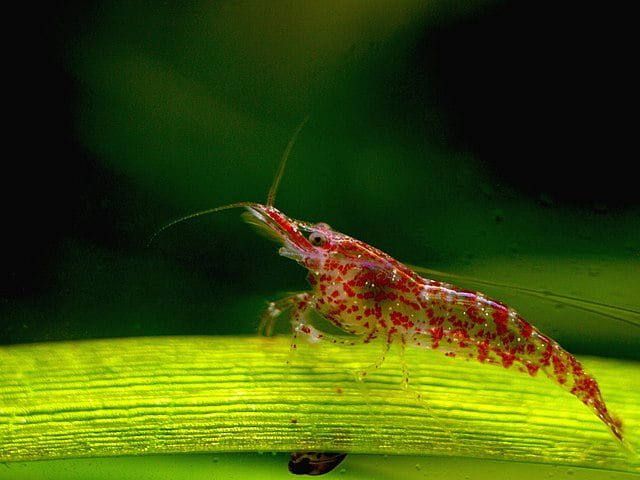
The shrimp aquaculture industry in Latin America has faced a changing landscape of disease threats in recent decades. While late in the 20th century, issues such as “Las Bolitas” syndrome (LBS), also known as Zoea-2 syndrome, plagued hatcheries, the past years have seen a shift towards postlarval mortality caused by diseases such as acute hepatopancreatic necrosis disease (AHPND) and Translucent Postlarval Disease (TPD).
In September 2023, Latin American shrimp hatcheries reported a resurgence of high mortality rates in zoea 2 stages. Microscopic examination revealed the presence of “bolitas” in the larvae, closely resembling classic LBS. While the causative agent remains unidentified, clinical signs and macroscopic observations point towards a possible return of LBS.
Scientists from South Florida Farming Corp. and James Cook University published a Preprint article reporting microbiological, polymerase chain reaction (PCR) tests, and histological findings of both healthy and diseased animals suffering from Las Bolitas Syndrome.
Las Bolitas Syndrome or Zoea 2 Syndrome
Las Bolitas Syndrome (LBS), also known as Zoea 2 Syndrome, plagued marine shrimp hatcheries in the 1980s, 1990s, and early 2000s in Ecuador, Mexico, and the United States.
This disease primarily affected larvae in zoea and mysis stages, causing devastating mortalities of up to 90%. The hallmark of LBS is the formation of distinctive spheres within the shrimp’s hepatopancreas (digestive organ). These “bolitas” eventually migrate to the intestine, leading to bioluminescence, behavioral changes, and loss of appetite.
Thangaraj et al., (2023) reported that Zoea 2 syndrome is characterized by reduced feeding and altered metamorphosis, causing delayed molting and massive mortality; and describe that clinical signs include loss of appetite, empty intestine without fecal matter, halted peristaltic movement of the intestine, inflammation in the intestinal epithelium, and white balls or white spheres as structures in the intestine.
In-Depth Analysis
Researchers collected shrimp larvae (both diseased and healthy) from two different hatcheries.
While initial observations suggested a potential link to lipid issues, a closer look revealed a different story. Histopathological examination identified detached cells and tissue within the digestive tract of affected larvae. Healthy larvae, on the other hand, showed a normal intestine filled with algae cells.
Stay Always Informed
Join our communities to instantly receive the most important news, reports, and analysis from the aquaculture industry.
Identifying the Culprit
To identify the cause, researchers conducted polymerase chain reaction (PCR) testing on both healthy and diseased larvae. This test detected 22 known shrimp pathogens, with negative results for 19 pathogens, including the concerning acute hepatopancreatic necrosis disease (AHPND). However, a key difference was found: the presence of Vibrio spp. bacteria at significantly higher levels (around 100 times more) in diseased larvae compared to healthy ones.
Understanding Las Bolitas Syndrome Pathology
Histological examination of the affected zoea revealed a specific pattern of damage. The shrimp’s hepatopancreas, a vital organ responsible for digestion and nutrient absorption, suffered tissue degeneration. This degeneration formed spherical structures that eventually moved to the digestive system, causing the characteristic “bolitas” effect.
The “bolitas” eventually migrated to the intestine, and affected larvae often exhibited bioluminescence, behavioral changes, and loss of appetite.
Vibrio alginolyticus Takes Center Stage
Microbiological analysis identified the specific culprit as Vibrio alginolyticus, a type of bacteria commonly found in marine environments. While the initial visual signs of Las Bolitas resembled previous descriptions, detailed histopathological examination revealed a slightly different picture. The affected intestines contained sloughed-off cells, and the developing hepatopancreas showed a distinct coloration due to the presence of these damaged cells within the digestive tract.
It is important to note that in a study from 2017, researchers in India reported shrimp larval mortalities in 9 shrimp hatcheries. They identified V. alginolyticus as the causative agent of “Zoea 2 syndrome.”
Norfolk (2023) reports that V. alginolyticus is an opportunistic pathogen and agent of diseases in both humans and animals; however, diseases in animals are widely associated with the aquaculture industry.
Importance for the Shrimp Industry
This research highlights the importance of comprehensive diagnostic techniques to identify shrimp diseases. Las Bolitas syndrome, while initially appearing similar to a known issue, was revealed to be caused by Vibrio alginolyticus. This finding underscores the need for ongoing monitoring and research to develop effective strategies for preventing and managing Las Bolitas syndrome in shrimp hatcheries.
Other researchers have proposed a series of control methods for vibriosis in marine shrimp.
Additionally, some additional considerations for shrimp producers include:
- Maintaining optimal water quality in hatcheries is crucial for preventing bacterial growth.
- Implementing biosecurity measures to minimize pathogen introduction is essential.
- Further research is needed to explore possible treatment options and preventive measures specifically targeting Vibrio alginolyticus and Las Bolitas syndrome.
Reference (open access)
Intriago, P.; Montiel, B.; Valarezo, M.; Romero, X.; Arteaga, K.; Cercado, N.; Burgos, M.; Shinn, A.P.; Montenegro, A.; Medina, A.; et al. Las Bolitas Syndrome in Penaeus vannamei Hatcheries in Latin America. Microorganisms 2024, 12, 1186. https://doi.org/10.3390/microorganisms12061186
Other References
Thangaraj, S. K., Nathamuni, S. P., Katneni, V. K., Jangam, A. K., Avunje, S., Thulasi, D. N., Grover, M., Angel, J. R., & Shekhar, M. S. (2023). Microbial communities associated with Zoea-2 syndrome and White feces syndrome in P. Vannamei farming. Frontiers in Marine Science, 10, 1120004. https://doi.org/10.3389/fmars.2023.1120004
Norfolk, W. (2023). Vibrio alginolyticus: a physiological, chemical, and ecological characterization of an emerging marine pathogen (Doctoral dissertation, University of Georgia).
Editor at the digital magazine AquaHoy. He holds a degree in Aquaculture Biology from the National University of Santa (UNS) and a Master’s degree in Science and Innovation Management from the Polytechnic University of Valencia, with postgraduate diplomas in Business Innovation and Innovation Management. He possesses extensive experience in the aquaculture and fisheries sector, having led the Fisheries Innovation Unit of the National Program for Innovation in Fisheries and Aquaculture (PNIPA). He has served as a senior consultant in technology watch, an innovation project formulator and advisor, and a lecturer at UNS. He is a member of the Peruvian College of Biologists and was recognized by the World Aquaculture Society (WAS) in 2016 for his contribution to aquaculture.




